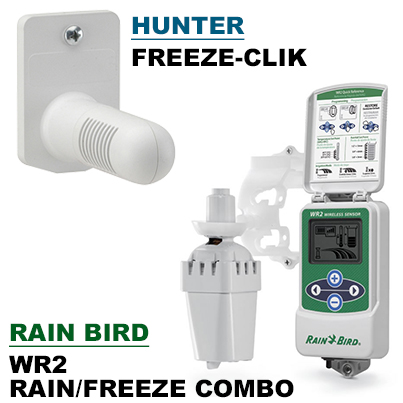LANDSCAPE
Water conservation may not be one of the hottest topics, especially when we have a winter where the mountains are well above average for snow pack or we have an exceptionally wet spring, but it should be. We live in a high alpine desert where water is certainly our most precious resource and conserving that resource is not all that difficult when it comes to your sprinkler system. There are some very simple things that you can do yourself to minimize the potential waste a sprinkler system may generate.
One of the easiest things to add to a sprinkler system is a rain/freeze sensor. This wireless device will  interrupt or delay a sprinkler program if enough natural precipitation is registered or if the weather turns and gets too cold to water. Another very simple thing you can do is monitor your lawn throughout the season and adjust the run times of each of your turf zones as the year progresses. Periodically checking the system for breaks, misadjusted heads or leaking valves will also make a significant difference in the amount of water wasted.
interrupt or delay a sprinkler program if enough natural precipitation is registered or if the weather turns and gets too cold to water. Another very simple thing you can do is monitor your lawn throughout the season and adjust the run times of each of your turf zones as the year progresses. Periodically checking the system for breaks, misadjusted heads or leaking valves will also make a significant difference in the amount of water wasted.
There are some other modifications you can make to your system that will also make a difference in the overall efficiency. Changing old sprinkler heads to more efficient spray or rotary nozzles may increase the run time of your zones. Since they put the water down on the turf much slower than traditional spray heads there is less pooling and runoff and with the larger droplets they are less susceptible to wind. A soil sensor measures the moisture in a particular area of the yard and will interrupt a cycle if the predetermined level is reached. Weather monitoring devices (site or internet based) use current conditions with recent weather history to determine what adjustments need to be made to the controller and can adjust the run times accordingly in real time.
By far one of the biggest impacts you can make towards conserving water is eliminating turf areas and replacing them with shrub/perennial beds dressed in a thick layer of mulch, watered with a drip irrigation system. Drip irrigation can be set up to water specific plant material (point source emitters) or can be laced in a bed with a large amount of perennials or groundcover and distributes the water through emitters molded into the pipe, spaced at regular intervals (Netafim). With no overhead spray hitting hard surfaces and very little evaporation, this is one of the most efficient ways to water your yard.
